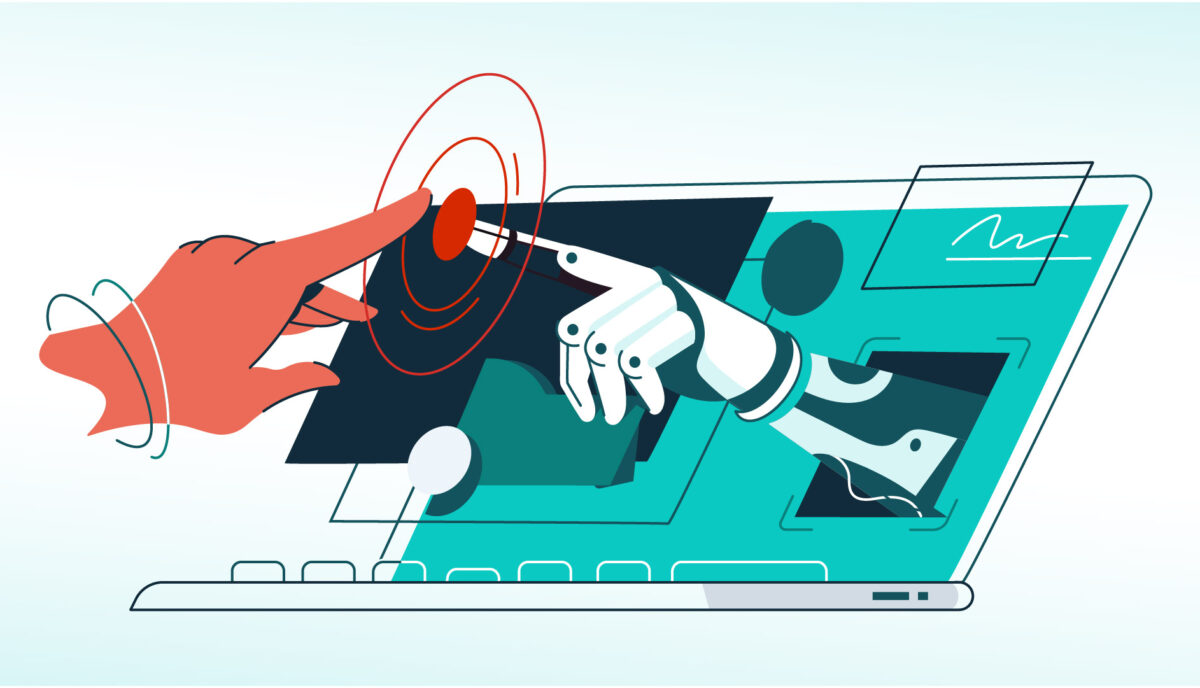Healthcare Internet Conference 2023: Our Take on the 5 Hottest Topics
So much of healthcare happens in person. But as the pressure to connect online continues to climb, what are the challenges you face as a healthcare marketer — and the opportunities you’d love to capitalize on?
Whatever they are, chances are that attendees of the most recent Healthcare Internet Conference (HCIC) can relate. HCIC brings together marketers and digital leaders to explore the unique and sometimes unexpected ways digital innovation is shaping the industry.
Though this was Oomph’s first time attending, HCIC has actually been around since 1996. The tight-knit community that’s formed over the past few decades offered a safe space for candid conversations about navigating digital in a post-pandemic world. Here are five topics that ruled those conversations, how marketers like you are approaching them, and what we see as the biggest opportunities for each.
1. To Adopt or Not To Adopt Artificial Intelligence (AI)
A whopping 86% of healthcare companies use some form of AI. But despite the number of organizations adopting AI for everything from IT operations to workforce management, healthcare marketers are still largely stuck in an AI gray zone.
Many HCIC attendees shared that they were unsure which AI tools were ready to use today or if using AI could introduce regulatory, privacy, and ethical concerns. Would using AI-generated photos in marketing misrepresent patients or providers? Can chatbots effectively and appropriately provide support beyond basic admin and billing functions?
While some organizations are already building their own tools (a diagnostic AI to help call center employees determine when a caller should go to urgent care caught our eye), others are interested in out-of-the-box solutions.
Our take: Proceed with caution. AI can revolutionize patient care and operations, but it can also introduce costly and reputationally damaging privacy and regulatory issues. If you aren’t well-versed in compliance, work with a partner who is to ensure your AI actually helps — not hurts.
2. How To Combat Skyrocketing Employee Turnover
The 2020s will go down in history as one of the most difficult decades to work in healthcare. Kicked off by the COVID-19 pandemic, employee attrition only continues to rise as more employees enter retirement or simply burn out.
While exact attrition rates vary by the healthcare segment, data from Oracle shows that hospitals lose nearly 20% of their employees every year. For nursing homes, that number skyrockets to 94%.
Given that the cost of replacing an employee is between six and nine months of that employee’s salary, HCIC attendees were understandably interested in swapping ideas to boost employee retention. An intranet was a fairly universal solution, but the question of what makes a truly effective intranet remained.
Our take: Embrace personalization. Talk to your employees, understand their needs, then build custom features and integrations that meet them. We saw firsthand through our work with Rhode Island-based health system Lifespan that this is an effective way to build community and engagement, both of which are key to retention.
3. The Eternal Quest for Patient Acquisition
There are two questions that keep most healthcare organizations awake at night: How do you find patients? And, once you’ve found them, how do you keep them?
Attendees almost universally agreed that healthcare is a long way from creating seamless experiences that keep patients coming back. Many systems are fragmented, regulated, or outdated, creating barriers to patient care that patients are all too happy to leave behind.
Our take: We think healthcare organizations can take a page out of other industries’ books here. Like any industry, a well-designed user experience (UX) is the foundation for interactions that delight patients.
4. Personalizing the Patient Experience
On the topic of patient experience, one of the most talked-about strategies was personalization. While personalization has long been a favorite technique of ours, we were encouraged to hear the number of HCIC attendees who shared our focus.
Many saw landing pages as the “front door” to the digital patient experience and understood that personalization could level up those interactions. We also heard excitement around combining personalization with integration — from using implicit data from the patient’s online actions to explicit data from Epic’s MyChart to personalize the information that users see.
Our take: In our experience, adding a digital or content experience platform to your content management system (CMS) can do a lot of the heavy lifting for you. But like with anything in healthcare, the key is operating within privacy and regulatory restraints. Be sure to work with an implementation partner who’s equally skilled in technology and compliance.
5. Finding the Right CMS
Content management systems (CMS) aren’t always a hot topic at conferences, but we were pleasantly surprised by how often they came up in conversation at HCIC — and how many opinions attendees had about them.
Most attendees felt strongly about which platforms they loved and which ones they hated. While heavyweights like Sitecore, Drupal, Optimizely, and ScorpionCMS were fixtures of the conversation, the primary takeaway is that having a good CMS experience is critical, but can be challenging to achieve.
Our take: Take the time to get your CMS right. Choosing a lackluster CMS or underwhelming implementation partner could lock you into a multi-year headache. Many attendees we spoke to are still extremely cost-conscious in the wake of COVID, so they expect a major investment like a CMS to last at least five years. We always suggest setting a budget, mapping an ideal content architecture, and inventorying key features, then finding the right CMS to meet all those needs.
Let’s Continue the Conversation
The thing we’ll remember most about HCIC is the connection. As challenging as healthcare can be, it also brings people together: patients, providers, and, yes, even healthcare marketers. The five topics HCIC honed in on are important, but they’re just a snapshot of the many conversations healthcare teams are having about marketing, technology, and the patient experience.
Our hope is that the conversation will continue until the next HCIC and beyond. If you’re a healthcare marketer, what else is on your mind? We’d love to talk about it.


